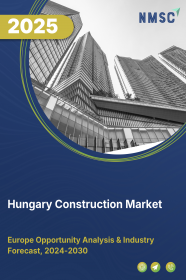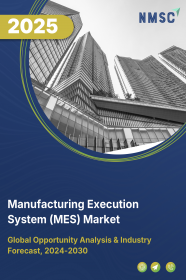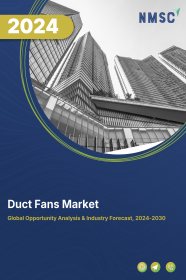
Hungary Construction Market by Type (Renovation and New Construction), and by Sector (Real Estate, Infrastructure, and Industrial)–Opportunity Analysis and Industry Forecast, 2024–2030
Industry: Construction & Manufacturing | Publish Date: 14-Apr-2025 | No of Pages: 144 | No. of Tables: 108 | No. of Figures: 53 | Format: PDF | Report Code : CM2210
US Tariff Impact on Hungary Construction Market
Trump Tariffs Are Reshaping Global Business
Hungary Construction Market Overview
The Hungary Construction Market size was valued at USD 13.56 billion in 2023, and is predicted to reach USD 19.73 billion by 2030, at a CAGR of 7.2% from 2024 to 2030.
The construction market, interchangeably referred to as infrastructure, holds a pivotal position in the economy, managing the entire lifecycle of diverse physical structures, encompassing infrastructure, buildings, and facilities. This sector encompasses a broad spectrum of projects, spanning from residential, commercial, and industrial developments to civil engineering and institutional infrastructure initiatives.
Collaboration among a diverse array of stakeholders, including architects, engineers, contractors, suppliers, developers, investors, and government agencies, is integral to its functioning. Positioned for growth, the industry is being propelled by an increased emphasis on environmentally sustainable practices, such as the incorporation of green building materials and energy-efficient designs. Additionally, factors such as the rise in per capita income in emerging economies and low-interest rates in developed nations are anticipated to further drive the expansion of the infrastructure market.
Government Spending Drives Infrastructure Market Expansion
Hungary's construction market is undergoing significant growth, fueled by increased government investment in infrastructure projects, particularly in the power energy and highway sectors. The European Union (EU) allocated funds to Hungary for over 60,000 projects aimed at enhancing telecommunications, energy, and highway infrastructure. This financial support, integral to Hungary's National Development Plan (2014-2020), earmarked approximately USD 33 billion for diverse projects, spanning tourism, infrastructure development, healthcare, and environmental protection.
Sustainable Transportation Initiatives Propels Market Growth
Additionally, the European Union funded the construction and reconstruction of 670 kilometers of road, rail, tram, and metro lines in Hungary through the Integrated Transport Operational Program 2014-2020. These projects, such as the M25 highway connection to Eger and the Intermodal Passenger Transport Centre in Debrecen, aim to reduce transport-related greenhouse gas emissions by 90% by 2050.
Such efforts signify Hungary's commitment to a more sustainable and efficient transportation system, aligning with broader environmental objectives and enhancing infrastructure for the future drives the construction market growth.
Regulatory Complexities is a Barrier to Market Growth
In the construction market, overcoming regulatory complexities poses a significant challenge. Infrastructure projects often encounter obstacles due to the intricate web of government regulations and permitting procedures. Infrastructure endeavors demand numerous permits and approvals from governmental bodies at local, regional, and national levels.
These mandates encompass adherence to zoning regulations, environmental assessments, compliance with building codes, safety standards, and various regulatory stipulations. The lengthy process of acquiring permits, bureaucratic inefficiencies, and disparities in regulations among different jurisdictions can substantially prolong project timelines and inflate costs. Furthermore, fluctuations in regulations or unexpected policy changes can disrupt ongoing projects and deter potential investments.
Integration of Digitalization and BIM Presents Lucrative Opportunity for Market Expansion
The construction market is undergoing a transformative phase with the integration of digitalization and the adoption of Building Information Modeling (BIM). By leveraging advanced technologies such as BIM, efficiency, accuracy, and collaboration across diverse projects are enhanced. BIM, a sophisticated 3D modeling tool, empowers stakeholders to generate and manage digital representations of structures and infrastructure, facilitating improved coordination and communication among project teams.
For example, in September 2022, the National Institute of Building Sciences (NIBS) initiated the Hungary National Building Information Management (BIM) Program. This program aims to revolutionize the infrastructure sector, achieving unprecedented levels of industrial efficiency through digitalization. By addressing the inadequacy of digitalization within the Hungary infrastructure sector, the initiative seeks to streamline lifecycle work processes, making them more efficient, cost-effective, resilient, and safer for infrastructure and maintenance.
Competitive Landscape
The market players operating in the Hungary construction industry include Market CBRE Hungary, Matthew & Daniel's, Progress Group, ASA Construction Ltd, STRABAG, JLL, Tower International, Duna House, Otthon Centrum, Futureal Group, Immobilia Plc, Indotek Group, DVM group, Cordia Group, Wing zrt, and others.
Hungary Construction Market Key Segments
By Type
-
Renovation
-
New Construction
By Sector
-
Real Estate
-
Residential
-
Affordable
-
Luxury
-
- Commercial
-
Retail Buildings
-
Office Buildings
-
Hospitality
-
Healthcare Facilities
-
Educational Institutes
-
Entertainment Ventures
-
-
-
Infrastructure
-
Transportation
-
Airport
-
Port
-
Rail
-
Road
-
-
Water and Wastewater
-
Energy
-
Telecommunication
-
-
Industrial
-
Manufacturing Plant
-
Warehouses
-
Power Plants
-
Oil Refineries
-
Chemical Plants
-
Key players
-
CBRE Hungary
-
Matthew & Daniel's
-
Progress Group
-
ASA Construction Ltd
-
STRABAG
-
JLL
-
Tower International
-
Duna House
-
Otthon Centrum
-
Futureal Group
-
Immobilia Plc
-
Indotek Group
-
DVM group
-
Cordia Group
-
Wing zrt
REPORT SCOPE AND SEGMENTATION:
|
Parameters |
Details |
|
Market Size in 2023 |
USD 13.56 Billion |
|
Revenue Forecast in 2030 |
USD 19.73 Billion |
|
Growth Rate |
CAGR of 7.2% from 2024 to 2030 |
|
Analysis Period |
2023–2030 |
|
Base Year Considered |
2023 |
|
Forecast Period |
2024–2030 |
|
Market Size Estimation |
Billion (USD) |
|
Growth Factors |
|
|
Companies Profiled |
15 |
|
Market Share |
Available for 10 companies |
|
Customization Scope |
Free customization (equivalent up to 80 working hours of analysts) after purchase. Addition or alteration to country, regional, and segment scope. |
|
Pricing and Purchase Options |
Avail customized purchase options to meet your exact research needs. |

















 Speak to Our Analyst
Speak to Our Analyst

















